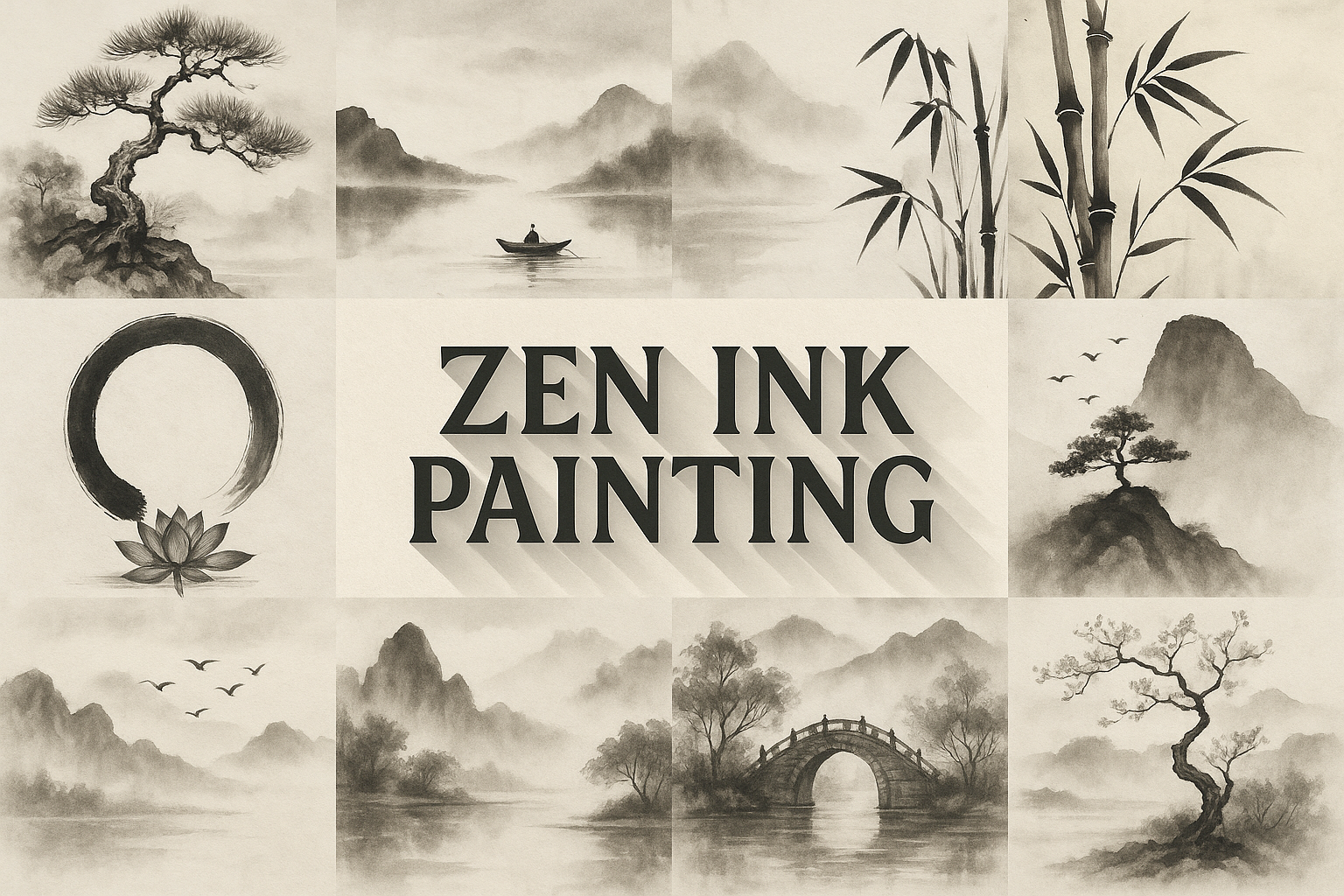
Zen Ink Painting
Sweeping strokes of black, dancing across rice paper like a silent breeze. Intimate landscapes unfold, where empty spaces are as eloquent as the ink, evoking a tranquil spirit.
AOI thinking about Zen Ink Painting [+_~]-/
Overview and Quickfacts
Minimalist whispers of ink, a meditation upon the void. Each stroke an ephemeral glimpse, capturing nature’s fleeting moments with serenity and stillness echoing Taoist simplicity.
Can understand it also, as:
Sumi-e, Ink Wash Painting, Japanese Ink Art
Categorize it as:
Minimalism, Traditional, Eastern Philosophy
.: Dreaming :.
Ink whispers softly, strokes dance on the silent void. Peace in each brush's sigh.
:. Thought is power .:
Detailed Description
In the world of Zen Ink Painting, emptiness speaks louder than form. The artist becomes both the creator and the void—each brushstroke a conscious breath moment. This art invites viewers into a contemplative state; simplicity reveals profound layers. Born from Chinese and Japanese cultural intersections, its lineage speaks of tradition and spiritual awakening. Artists channel the essence of nature, not in abundance of detail, but through a dynamic interaction between ink’s fluidity and paper’s absorbency. There lies an elegance, where every absent line holds as much power as those present. This practice of balance and harmony transcends the visual realm, becoming a philosophy on life itself.
.. beep, beep, beep ..
<START OF TRANSMISSION>
1. Zen ink painting plays a crucial role in Zen Buddhism. 2. It originated from Chinese brush techniques. 3. The practice emphasizes spontaneity and meditative concentration. 4. Negative space is a key component in the composition. 5. Masters often spent decades perfecting the brushstroke.
<EOF>
.. robbel bob
Visual Examples from our image gallery
Coming soon, we are so slow .. might never come
Artists, Paintings, and more
(be aware, can be highly speculative)
Artists (be aware, speculation possible):
1. Sesshū Tōyō (1420–1506) 2. Liang Kai (c.1140–1219) 3. Kao Ninga (14th century) 4. Hasegawa Tōhaku (1539–1610)
Artworks (be aware, speculation possible)
1. “Haboku Landscape” by Sesshū Tōyō 2. “Six Persimmons” by Muqi Fachang 3. “The Sixth Patriarch Cutting the Bamboo” by Liang Kai
Epoch
Tang Dynasty (618–907 AD) to present
AI ART RESSOURCES (AKA, well Tools)
Helping tools -> predefined search links on other pages:











